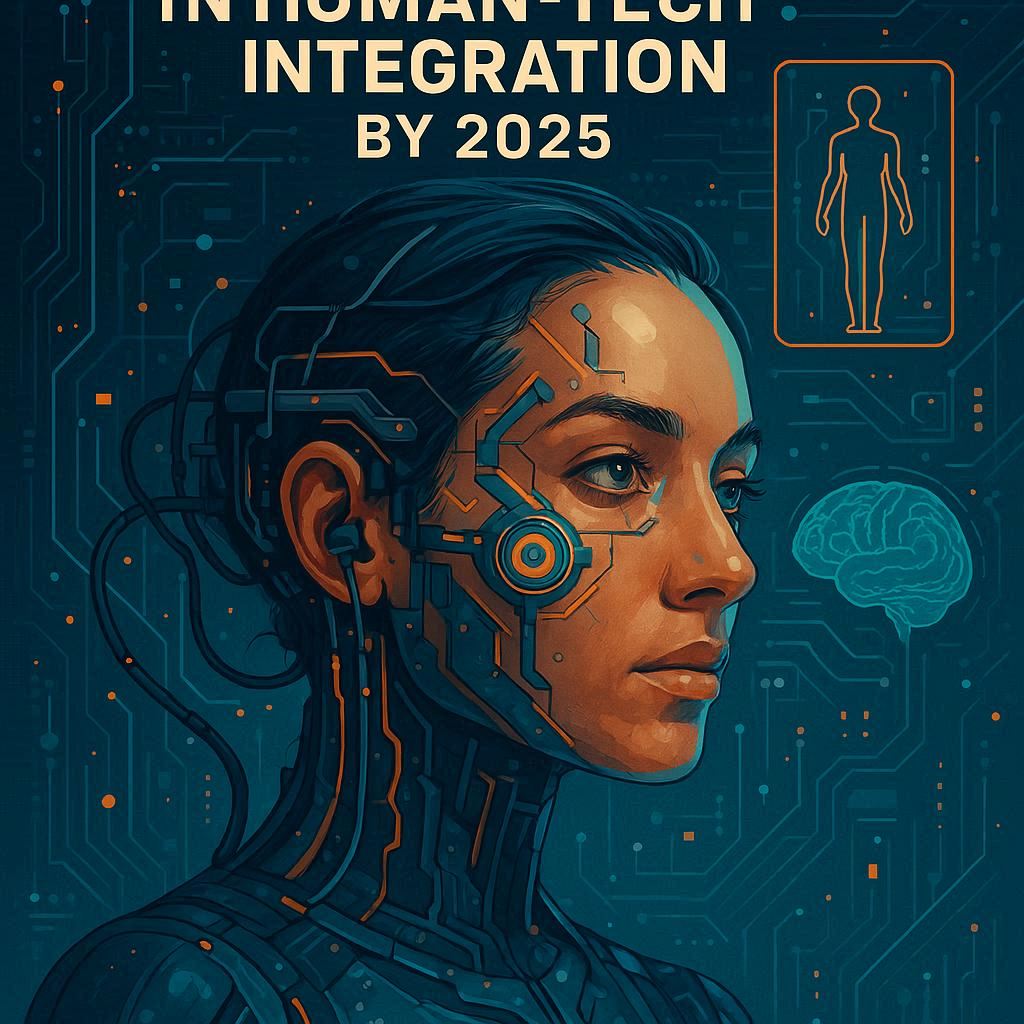
Exclusive September 03, 2025
Imagine a world where technology doesn’t just sit in your hand or on your face but becomes an extension of your very being. Enter “Insanont,” a term coined to describe the seamless fusion of human biology and advanced technology, driven by breakthroughs in brain-computer interfaces (BCIs), augmented reality (AR), and ambient AI. Tech giants like Neuralink, Meta, and Google are pushing the boundaries of this “Insanont” era, redefining how we interact with the digital world. For readers, here’s a deep dive into what means, how it’s reshaping our future, and why it matters to you.
What Is Insanont?
Insanont encapsulates the next evolution of connectivity, where devices integrate so deeply with human cognition and physiology that they feel like natural extensions of ourselves. Unlike smartphones, which demand active engagement, it’s technologies—think BCIs, smart implants, and AR wearables—work intuitively, often without screens or manual inputs. This shift, fueled by consumer demand for less intrusive tech, is set to transform daily life by 2025.
A 2025 global survey reveals 78% of tech users feel overwhelmed by screen-based devices, with 62% seeking solutions that blend effortlessly into their routines. It’s answers this call, leveraging AI and neural interfaces to create a fluid, thought-driven digital experience.
Why Smartphones Can’t Keep Up
Smartphones, while revolutionary, are hitting their limits:
- Screen Fatigue: Users check devices 150+ times daily, disrupting focus (Pew Research, 2025).
- Hardware Stagnation: Diminishing returns on processor upgrades make new models less enticing.
- Clunky Interactions: Touchscreens feel outdated compared to thought or gesture-based controls.
The Pillars of Insanont Technology
Tech leaders are investing heavily in Insannt innovations, from brain-linked implants to ambient AI ecosystems, to create a world where technology anticipates and responds to human needs effortlessly.
Brain-Computer Interfaces: The Core of Insanont
Neuralink’s BCIs are the heartbeat of Insaont. By 2025, their trials have expanded across the US, Canada, and the UK, with over 20 participants controlling devices like cursors and apps using only their thoughts. A paraplegic patient recently played virtual chess, showcasing the potential for accessibility and beyond. “BCIs make the impossible routine—controlling tech with your mind,” Musk noted in a recent interview.
Try It Today: While BCIs aren’t publicly available, explore Neuralink’s open-source demos or follow their trial updates for a glimpse into thought-driven tech.
Augmented Reality: Seeing the Insanont World
AR glasses, like Meta’s Project Orion and Apple’s anticipated 2026 smart glasses, are key Insanont tools. Orion’s lightweight design and 70-degree field of view project digital overlays—navigation, notifications, or translations—directly into your vision. Google’s Android XR, powered by Gemini AI, enhances this with real-time contextual data, like product details while shopping.
Meta’s Ray-Ban Smart Glasses, now with advanced AI, handle calls and translations hands-free. “it means tech that feels like a sixth sense,” said Meta’s CTO in a 2025 Wired feature.
Try It Today: Test Meta’s Ray-Bans for voice-activated features or Google’s ARCore apps for a taste of it’s visual layer.
Ambient AI: The Invisible Insanont Assistant
Ambient computing embeds AI into your environment, predicting needs without active input. Google’s Project Astra, a multimodal AI, powers smart homes and wearables, adjusting lighting or suggesting tasks based on context. Amazon’s Alexa 2.0, updated in 2025, offers similar proactive intelligence, making Insnont a reality where tech fades into the background.
Try It Today: Use a Google Nest or Amazon Echo to experience ambient AI or try Gemini-powered apps for object recognition.
Wearable Ecosystems: Insanont on Your Body
Wearables are evolving into standalone Insanont hubs. The Apple Watch Series 10 manages calls and payments independently, while startups like Limitless introduce AI pendants for conversation logging and task automation. Electronic tattoos—nanosensor patches—are also emerging, monitoring health or enabling contactless interactions.
Spatial Computing and the Insanont Metaverse
The metaverse, a 3D virtual space, aligns with nt by creating immersive environments for work and play. Meta’s Horizon Worlds and Apple’s Vision Pro, a mixed-reality headset, enable virtual collaboration, with a 2025 market report projecting $85 billion in spatial computing by 2030. These platforms reduce reliance on traditional devices, embodying Insannt’s seamless ethos.
| Feature | Smartphones | AR Glasses | BCIs |
|---|---|---|---|
| Interface | Touchscreen | Visual overlays, voice | Neural control |
| Portability | Pocket-sized | Lightweight eyewear | Implantable |
| Use Case | General-purpose | Navigation, entertainment | Accessibility, precision |
| Adoption Stage | Mature | Early commercial | Clinical trials |
| Cost | $200–$1,500 | $500–$2,000 | Not yet commercialized |
How Insanont Impacts Your Life
It’s technologies are already reshaping industries and routines:
- Healthcare: BCIs restore movement for paralyzed individuals; AR glasses guide surgeons with real-time data.
- Work: Spatial computing creates virtual offices, reducing screen dependency.
- Education: AR delivers interactive lessons, like virtual labs powered by Google’s tools.
- Daily Life: Wearables translate languages or manage schedules via thought or voice.
Challenges in the Insanont Era
Despite its promise, Insanont faces obstacles:
- Cost Barriers: Devices like Apple’s Vision Pro ($3,499) remain exclusive.
- Privacy Risks: BCIs and ambient AI collect sensitive data, with 80% of users concerned about misuse (2025 survey).
- Ethical Debates: Neural implants raise questions about cognitive alteration and societal acceptance.
Key Hurdles
- Affordability: High-end Insaont devices are out of reach for many.
- Data Security: Constant monitoring could lead to surveillance concerns.
- Cultural Resistance: Implants may face pushback, as seen with early Google Glass.
Apple’s Insanont Strategy
Apple is blending familiarity with Insanont innovation. The iPhone 16, released in 2024, uses advanced AI for predictive tasks, keeping smartphones relevant. Meanwhile, Apple’s Vision Pro and upcoming AR glasses signal a gradual shift toward Insnont’s screenless future. “We’re enhancing human capability, not replacing it,” Tim Cook emphasized in a 2025 interview.
Check our guide on AI-Driven Devices for more on Apple’s role in Insanont.
What Insanont Means for Readers
It offers transformative possibilities—professionals can boost efficiency with AR, while students gain immersive learning tools. Stay vigilant about privacy and costs. Experiment with wearables or AR apps to ease into this new era.
Conclusion: Embrace the Insanont Future
Insanont is redefining human-tech interaction with BCIs, AR glasses, and ambient AI. These innovations promise to revolutionize work, health, and daily life, but affordability and privacy remain critical concerns. Key takeaways:
- AR Is Now: Meta’s Orion and Apple’s glasses bring Insanont to life.
- BCIs Are Emerging: Neuralink’s trials hint at a thought-driven future.
- Protect Privacy: Opt for secure, encrypted devices.
- Start Small: Try AR apps or AI wearables to explore Insaont.
Ready to dive in? Test smart glasses or explore our Wearable Tech Trends guide to stay ahead.
FAQs
What defines Insanont technology? Insanont integrates BCIs, AR glasses, ambient AI, and wearables like smart tattoos for intuitive human-tech synergy. Examples include Neuralink’s implants and Meta’s Orion.
Will smartphones disappear in the Insanont era? Not by 2030. Smartphones will complement Insannt devices, per 2025 market insights.
How can I safeguard privacy with Insanont tech? Choose devices with end-to-end encryption, review permissions regularly, and limit data sharing.
How can I experience Insanont today? Try Meta’s Ray-Ban Smart Glasses, Google’s AR apps, or standalone wearables like the Apple Watch for a taste of Insanont’s potential.


